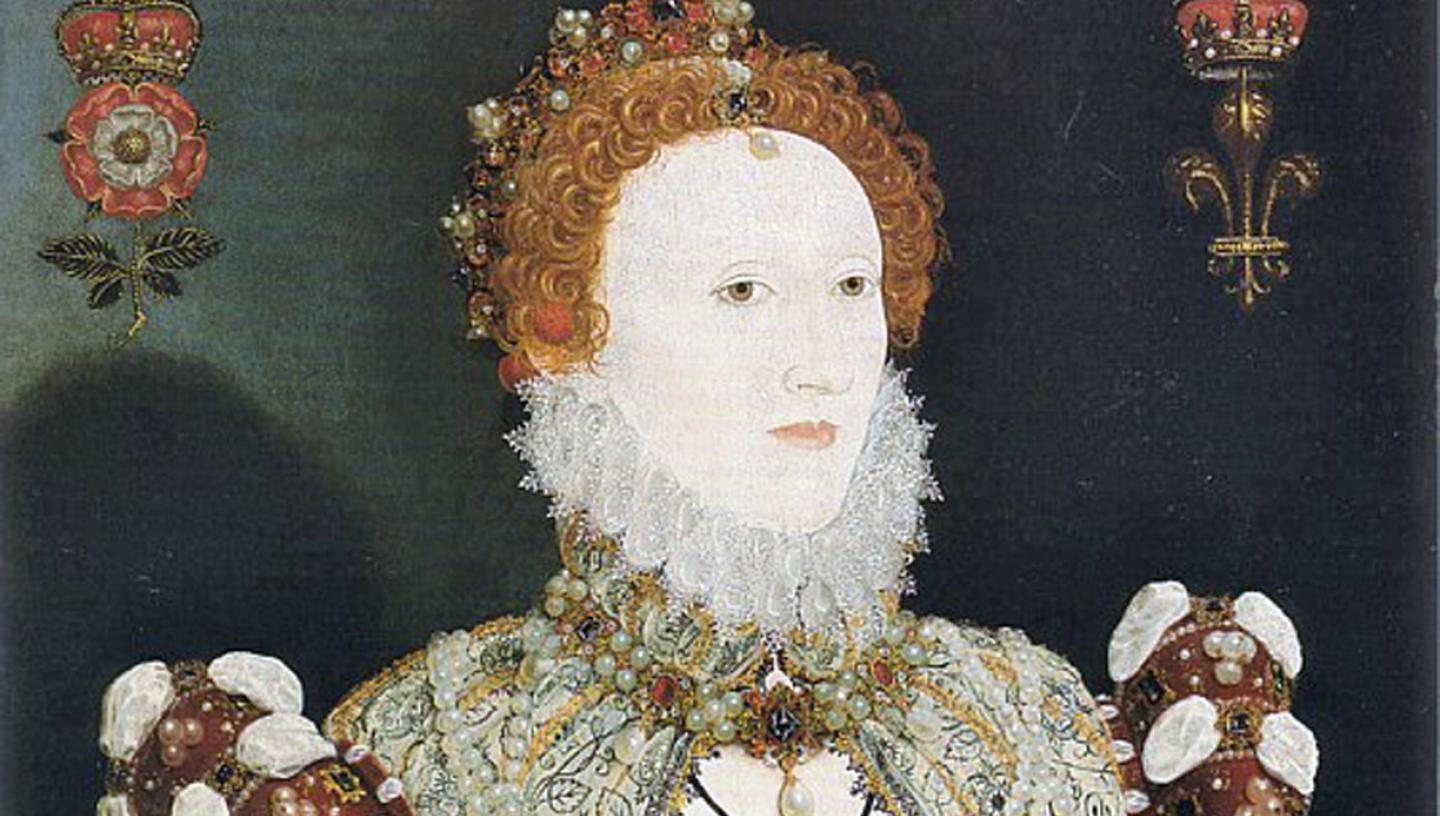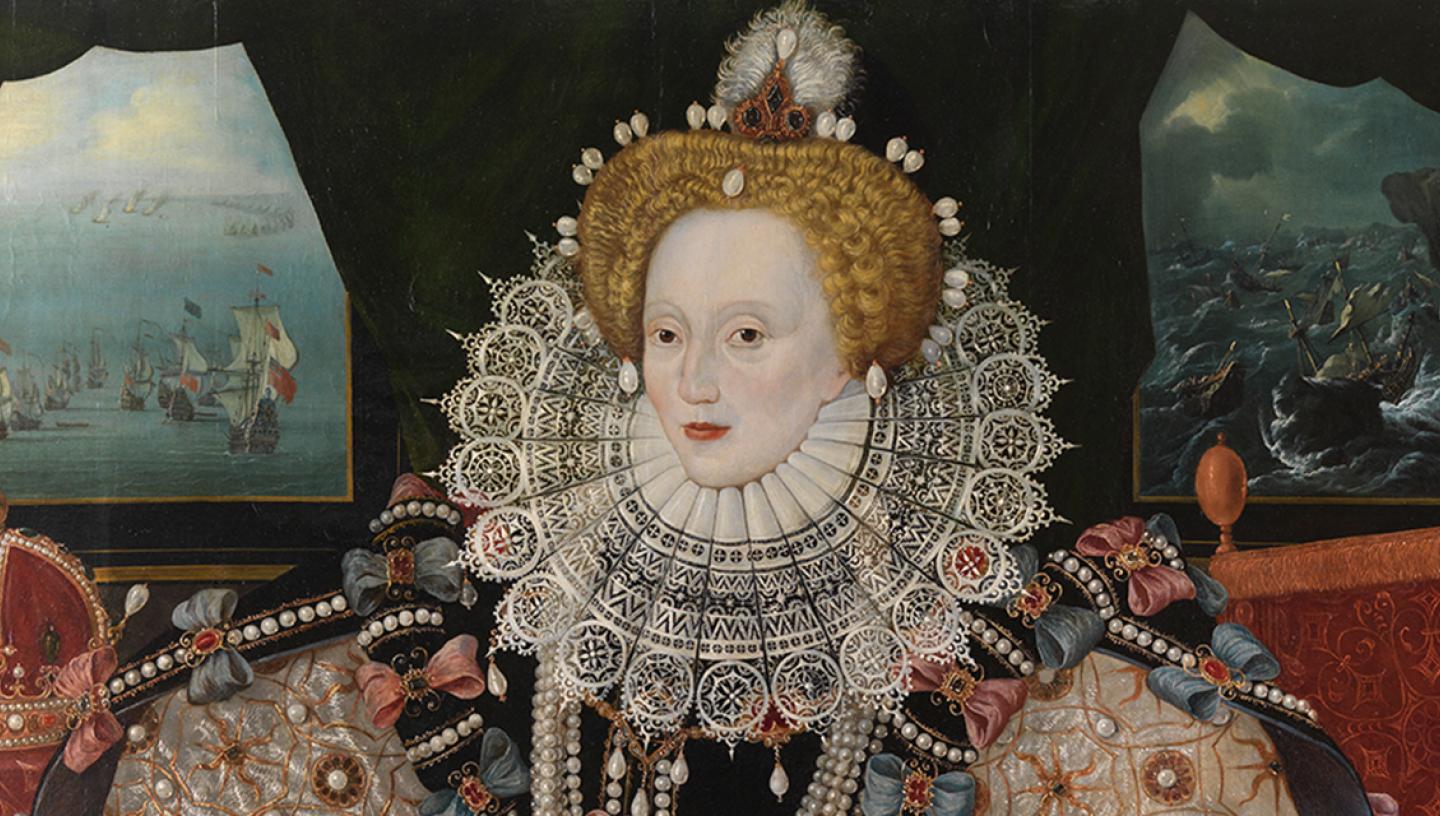
Elizabeth I: fashion and beauty
As the Queen of England and the nation’s most powerful woman, Elizabeth's taste set the 'look' of the 1500s.
Many of the women around Queen Elizabeth I at court could be seen wearing her cast-offs and others in society strove to emulate her style. Elizabeth’s dress evolved throughout her reign, from the fairly restrained graceful lines fashionable in her youth, to the narrow-waisted, puffy-sleeved, large-ruffed, full-skirted styles worn in her later years.
What was the mask of youth?
A trend setter
Elizabeth's influence on fashion extended beyond women's clothing. In the early years of her reign, men's fashion was much the same as it had been under her father and brother, favouring a broad, square silhouette with layers of garments made of rich fabrics. As Elizabeth's wardrobe became more opulent and elaborate, with a more exaggerated silhouette, so did that of her courtiers. Men wore corsets to give them a cinched waistline and stuffed 'peascod' doublets, which gave them a pointed pot-belly, like a pea in a pod.
Elizabethan beauty
The Renaissance ideal of beauty was fair hair, a pallid complexion, bright eyes and red lips. Elizabeth was tall and striking, with pale skin and light red-gold hair. She exaggerated these features, particularly as she aged, and other women sought to emulate them.
An alabaster complexion symbolised wealth and nobility, signalling that one did not have to labour in the sun, and women went to great lengths to achieve this look.
The most popular white foundation, called ceruse, was made out of white lead and vinegar. Concoctions used to bleach freckles and treat blemishes often included ingredients such as sulphur, turpentine and mercury. These toxic ingredients took their toll, leaving the skin 'grey and shrivelled' as one contemporary commentator noted. To combat this, the skin was glazed with raw egg white to produce a smooth, marble-like surface.
Getting the Elizabethan look
False veins were often painted onto the skin to highlight its 'transparency' and vermilion (mercuric sulphide) was the most popular choice to colour lips red. High, narrow arched brows and a high hairline required much plucking, and eyes were brightened with drops of belladonna juice and lined with kohl (powdered antimony).
Elizabeth's curly red hair presented another challenge for the fashion-conscious, and many recipes for dyeing and bleaching emerged as women tried to achieve the same look. Red wigs became a popular alternative, which Elizabeth also took to wearing. As Elizabeth aged, her legendary sweet tooth caught up with her, causing her teeth to decay. Her influence by this time was so pervasive that some women went so far as to blacken their own teeth to mimic her appearance.
Using our collections for research
The collections at Royal Museums Greenwich offer a world-class resource for researching maritime history, astronomy and time.
Find out how you can use our collections for research



